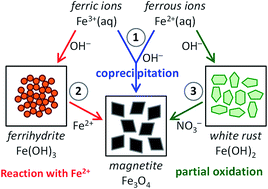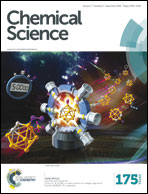Bioinspired magnetite synthesis via solid precursor phases
Abstract
Living organisms often exploit solid but poorly ordered mineral phases as precursors in the biomineralization of their inorganic body parts. Generally speaking, such precursor-based approaches allow the organisms – without the need of high supersaturation levels – to accumulate significant quantities of mineral material at the desired place and time, where they can be molded and crystallized into the right morphology and structure. This strategy is also of interest in the field of bioinspired materials science, as it potentially enables the bottom-up creation of novel materials with equal or improved functionality as compared to Nature, in water and at ambient temperatures. Also for the biomineralization of magnetite (Fe3O4) such a strategy has been reported: ferrihydrite, a poorly crystalline iron oxide, has been identified as a precursor for the final magnetite phase in the magnetosomes of magnetotactic bacteria as well as in the outer layers of chiton teeth. In this perspective, we discuss the efforts of us and others to understand and tune the nucleation and growth of magnetite crystals to date, in aqueous, room-temperature syntheses and employing different solid precursor phases. The various examples demonstrate the importance of the precursor approach in controlling the different properties of magnetite nanoparticles.


 Please wait while we load your content...
Please wait while we load your content...